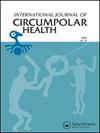Levels and trends of persistent organic pollutants in human populations living in the Arctic.
IF 1.3
4区 医学
Q4 PUBLIC, ENVIRONMENTAL & OCCUPATIONAL HEALTH
引用次数: 0
Abstract
The Arctic Monitoring Assessment Program (AMAP) is tasked with monitoring and assessing the status of environmental contaminants in the Arctic, documenting levels and trends, and producing science-based assessments. The objectives of this paper are to present the current levels of persistent organic pollutants (POPs) across the Arctic, and to identify trends and knowledge gaps as detailed in the most recent AMAP Human Health Assessment Report. Many Arctic populations continue to have elevated levels of these contaminants, and the highest levels of POPs were observed in populations from Greenland, Faroe Islands, and Nunavik (Canada), as well as populations in the coastal Chukotka district (Russia) for legacy POPs only. Concentrations of most POPs are declining in Arctic populations in regions where time trends data exist, although the declines are not consistent across all regions. The exceptions are per- and polyfluoroalkyl substances, with concentrations of some long-chain PFAS such as perfluorononanoic acid increasing in populations in Nunavik, Greenland and Sweden. This paper provides a more extensive summary of levels of contaminants in adults, pregnant women, and children across the Arctic than previous AMAP human health assessments, particularly for levels of long-chain PFAS, which are currently under consideration for inclusion in the Stockholm Convention.生活在北极地区的人类体内持久性有机污染物的水平和趋势。
北极监测评估计划 (AMAP) 的任务是监测和评估北极地区的环境污染物状况,记录污染物水平和趋势,并进行科学评估。本文旨在介绍整个北极地区持久性有机污染物 (POP) 的当前水平,并确定最新的 AMAP 人类健康评估报告中详述的趋势和知识差距。许多北极地区的居民体内持久性有机污染物含量持续升高,其中格陵兰岛、法罗群岛和努纳维克(加拿大)居民体内的持久性有机污染物含量最高,楚科奇沿海地区(俄罗斯)居民体内的持久性有机污染物含量也仅次于传统持久性有机污染物。在有时间趋势数据的地区,大多数持久性有机污染物在北极种群中的浓度都在下降,但并非所有地区的下降趋势都一致。但全氟烷基和多氟烷基物质除外,在努纳维克、格陵兰和瑞典,一些长链 PFAS(如全氟壬酸)的浓度在增加。与以前的北极监测评价方案人类健康评估相比,本文件更广泛地概述了北极地区成人、孕妇和儿童的污染物水平,特别是长链全氟辛烷磺酸的水平,目前正在考虑将其纳入《斯德哥尔摩公约》。
本文章由计算机程序翻译,如有差异,请以英文原文为准。
求助全文
约1分钟内获得全文
求助全文
来源期刊

International Journal of Circumpolar Health
医学-公共卫生、环境卫生与职业卫生
CiteScore
2.10
自引率
15.40%
发文量
51
审稿时长
6-12 weeks
期刊介绍:
The International Journal of Circumpolar Health is published by Taylor & Francis on behalf of the Circumpolar Health Research Network [CircHNet]. The journal follows the tradition initiated by its predecessor, Arctic Medical Research. The journal specializes in circumpolar health. It provides a forum for many disciplines, including the biomedical sciences, social sciences, and humanities as they relate to human health in high latitude environments. The journal has a particular interest in the health of indigenous peoples. It is a vehicle for dissemination and exchange of knowledge among researchers, policy makers, practitioners, and those they serve.
International Journal of Circumpolar Health welcomes Original Research Articles, Review Articles, Short Communications, Book Reviews, Dissertation Summaries, History and Biography, Clinical Case Reports, Public Health Practice, Conference and Workshop Reports, and Letters to the Editor.
 求助内容:
求助内容: 应助结果提醒方式:
应助结果提醒方式:


